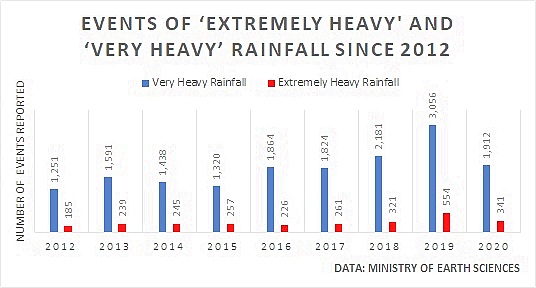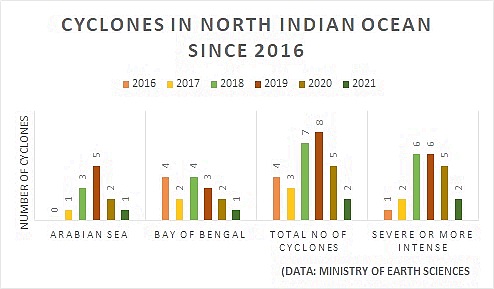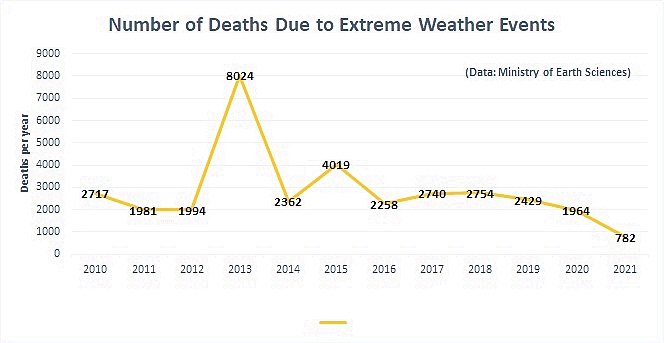
views
As world reels from extreme climate conditions due to human activities alone, India will witness more heat waves, droughts, rainfall and cyclonic activities in the coming decades, the Intergovernmental Panel on Climate Change (IPCC) has predicted.
The country has witnessed extreme conditions such as heavy rains, which has led to frequent unprecedented floods — Uttarakhand in 2013, Kerala in 2018, Hyderabad in 2020 and Goa in 2021 – and cyclones, heat waves and cold waves. This has not only impacted human lives but the entire ecology.
There has been a drastic jump in the events of ‘extremely heavy’ and ‘very heavy’ rainfall since 2012. The Ministry of Earth Sciences data shows that the occurrence of ‘extremely heavy’ rainfall has increased by 85% while ‘very heavy’ rainfall increased by over 53% since 2012.

(Events of ‘Extremely Heavy’ and ‘Very Heavy’ Rainfall Since 2012)
Further, 2019 was an exceptional year as over 554 stations reported ‘extremely heavy’ rainfall, the highest in the last decade. Also, more than 3,056 stations reported ‘very heavy’ rainfall, highest since 2012.
Over 75% of India’s districts are hotspots of extreme climate events, according to a December 2020 study by the Council on Energy, Environment and Water (CEEW). These districts, home to over 638 million people, are more prone to cyclones, floods, droughts, heat, and cold waves.
The report said while India witnessed 250 extreme climate events in 35 years between 1970 and 2005, it recorded 310 extreme weather events post 2005 alone. It added that over the years, the flood-prone areas have become drought-prone and vice-versa in over 40% of the districts.
Further, there has been a significant rise in mean temperature across the globe which is expected to trigger more intense meteorological events such as intense and severe cyclonic storms, according to the Ministry of Earth Sciences.
The frequency and intensity of cyclones developing over the Arabian Sea has increased in the last two decades. According to a study by Indian Institute of Tropical Meteorology (IITM), there had been a 52% increase in the frequency of cyclones over the Arabian Sea between 2001 and 2019 when compared to the 19-year period between 1982 and 2001.
According to the IMD, the record number of cyclones formed in both the Indian Seas together was 10. It happened four times — in 1893, 1926, 1930 and 1976.

(Cyclones in North Indian Ocean Since 2016)
In 2019, eight cyclonic storms were formed over the Indian Seas against the normal of five cyclonic storms, the Ministry data shows. The Arabian Sea alone contributed five cyclonic storms, equaling the previous record of 1902.
The year 2019 also witnessed development of more intense cyclones over the Arabian Sea. Out of five systems formed in the Arabian Sea, two were ‘very severe’, one ‘extremely severe’ and one ‘super cyclonic storm’. After 1990, the frequency of very severe cyclonic storms has also increased.
All the catastrophic climate events in India result from a 0.6 °C temperature rise in the last 100 years.
The IPCC report is a grim reminder of the threat posed by climate change. The report said the global temperatures have already risen by about 1.1 degrees Celsius from pre-industrial times and warned that the 1.5-Degree-Celsius threshold was likely to be breached before 2040.
Nearly 35,000 people were killed due to extreme weather condition in India since 2010, according to the ministry.

(Number of Deaths Due to Extreme Weather Events)
Read all the Latest News, Breaking News and Coronavirus News here.




















Comments
0 comment